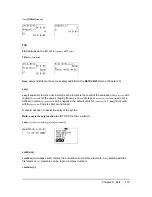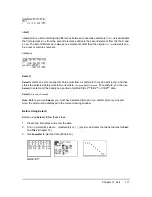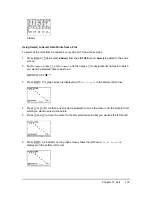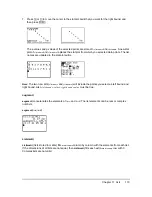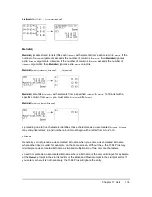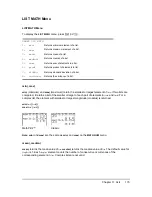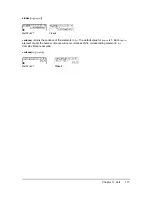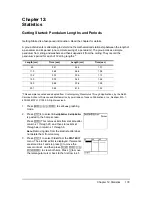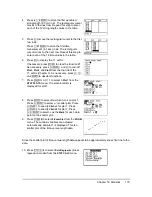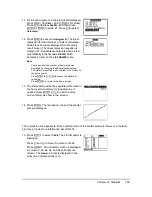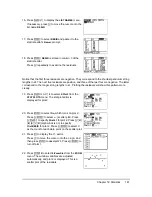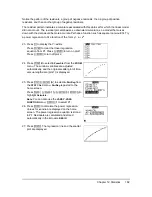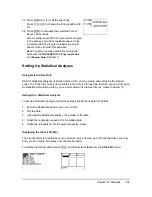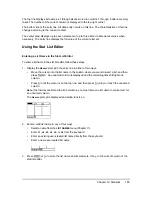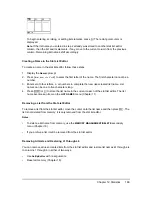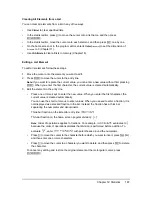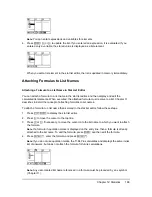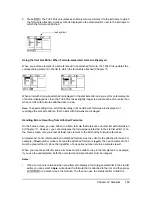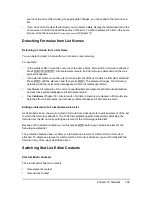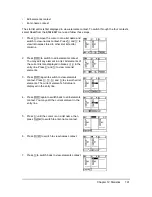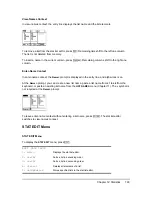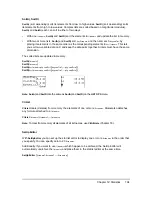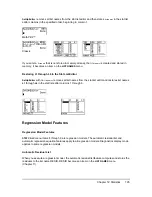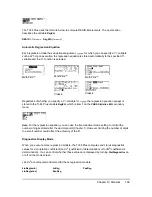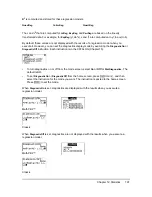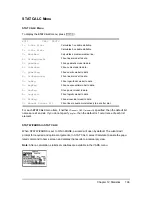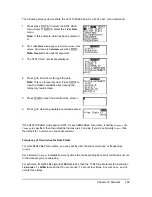
Chapter 12: Statistics
184
Setting Up Statistical Analyses
Using Lists to Store Data
Data for statistical analyses is stored in lists, which you can create and edit using the stat list
editor. The TI-84 Plus has six list variables in memory,
L1
through
L6
, to which you can store data
for statistical calculations. Also, you can store data to list names that you create (Chapter 11).
Setting Up a Statistical Analysis
To set up a statistical analysis, follow these steps. Read the chapter for details.
1. Enter the statistical data into one or more lists.
2. Plot the data.
3. Calculate the statistical variables or fit a model to the data.
4. Graph the regression equation for the plotted data.
5. Graph the residuals list for the given regression model.
Displaying the Stat List Editor
The stat list editor is a table where you can store, edit, and view up to 20 lists that are in memory.
Also, you can create list names from the stat list editor.
To display the stat list editor, press
…
, and then select
1:Edit
from the
STAT EDIT
menu.
33. Press
y
[
to recall the Last Entry.
Press
|
|
|
5
to change the string length to 50
cm.
34. Press
Í
to calculate the predicted time of
about 1.48 seconds.
Since a string length of 50 cm exceeds the lengths
in the data set, and since residuals appear to be
increasing as string length increases, we would
expect more error with this estimate.
Note:
You also can make predictions using the
table with the
TABLE SETUP
settings
Indpnt:Ask
and
Depend:Auto
(Chapter 7).

